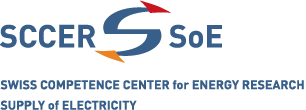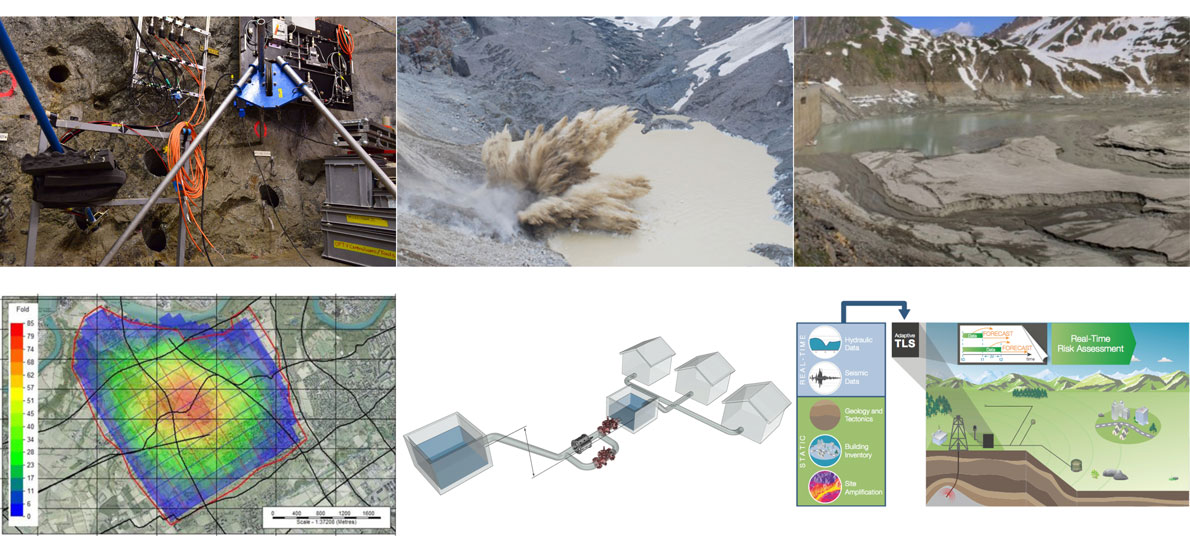Goodbye SCCER-SoE!

After seven years, the moment has come for us to say goodbye to SCCER-SoE. We look back on intense, insightful and rewarding years and are proud of what we have achieved. A big thank you to our sponsor Innosuisse for making such a comprehensive and insightful project possible. And of course, thank you, our readers, for your interest in the project and also to everyone involved in the SCCER-SoE for your support and contributions!
The SCCER-SoE website will not be updated anymore. However, it will continue to provide access to all its contents (reports, blog articles etc.). December 2021
Synthesis Reports available in the ETH Research Collection
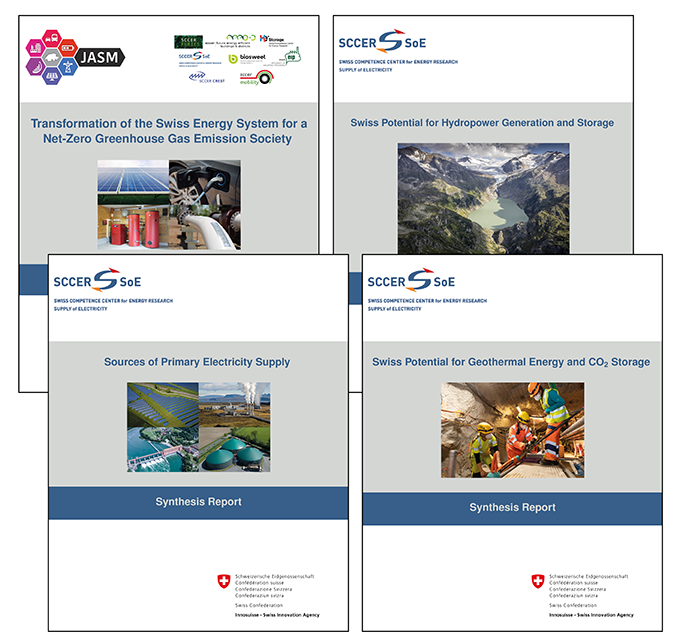
The Synthesis Reports have all received a DOI and are now available in the ETH Research Collection (incl. full text):
- Transformation of the Swiss Energy System for a Net-Zero Greenhouse Gas Emission Society
- Swiss Potential for Hydropower Generation and Storage
- Swiss Potential for Geothermal Energy and CO2 Storage
- Sources of Primary Electricity Supply
December 2021
Synthesis Reports available for download

The Synthesis Reports and the summaries are now availabe for download here. September 2021
Media event about the publication of the Synthesis Reports

On 1 September 2021, the four Synthesis Reports about the findings of the SCCER-SoE will be presented at a media event. Afterwards, they will be available for download here. August 2021
Submit your abstracts for the 12th edition of the European Geothermal PhD Days
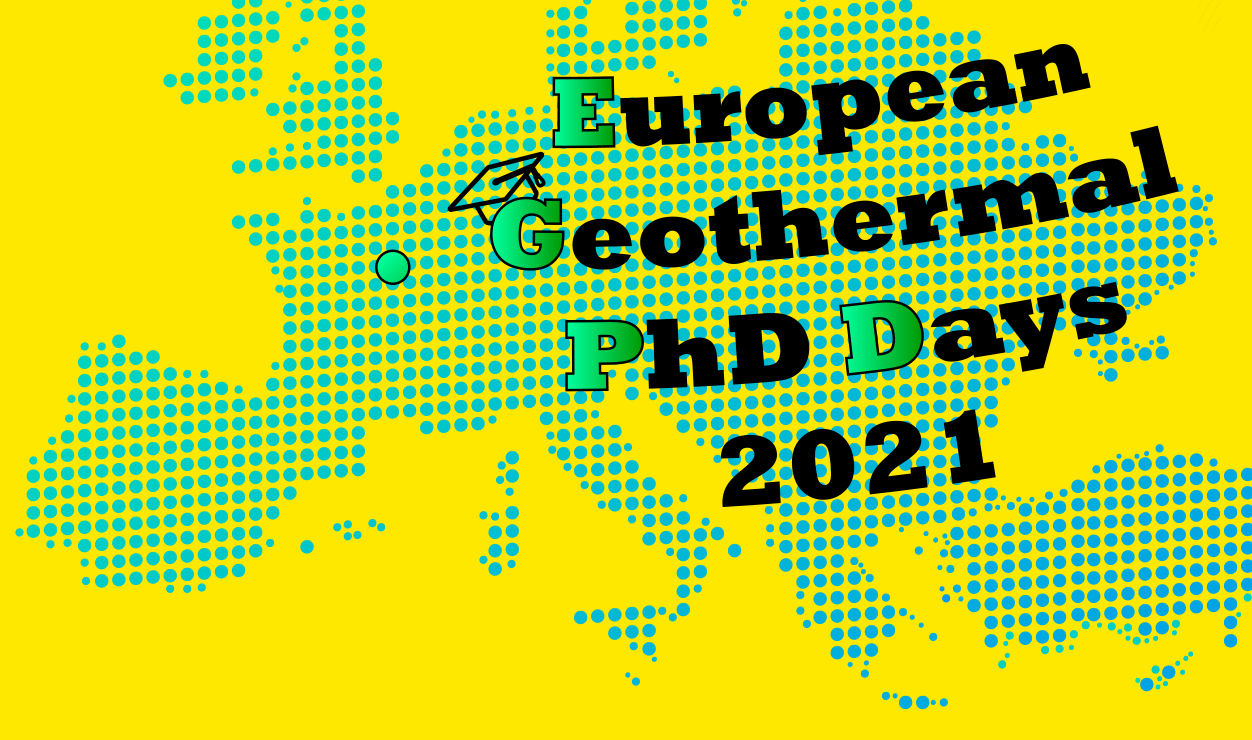
The EGPD 2021 take place on 15 and 16 February 2021 (online). Submit your abstracts until 31 December 2020 (extended!). Registration is free. You will find more information here. November 2020
Register now for the SCCER-SoE Annual Conference 2020

Registration for the SCCER-SoE Annual Conference 2020 is now open. Register here until 29 October 2020. October 2020
Save the date for the Annual Conference 2020: 2 November, online

The final SCCER-SoE Annual Conference 2020 provides an overview of the past eight years, presents insights into our research highlights and ventures a brief look into the future. It takes place on 2 November 2020 and will be entirely online. More information. September 2020
Annual Conference 2020: 2 November 2020, probably online
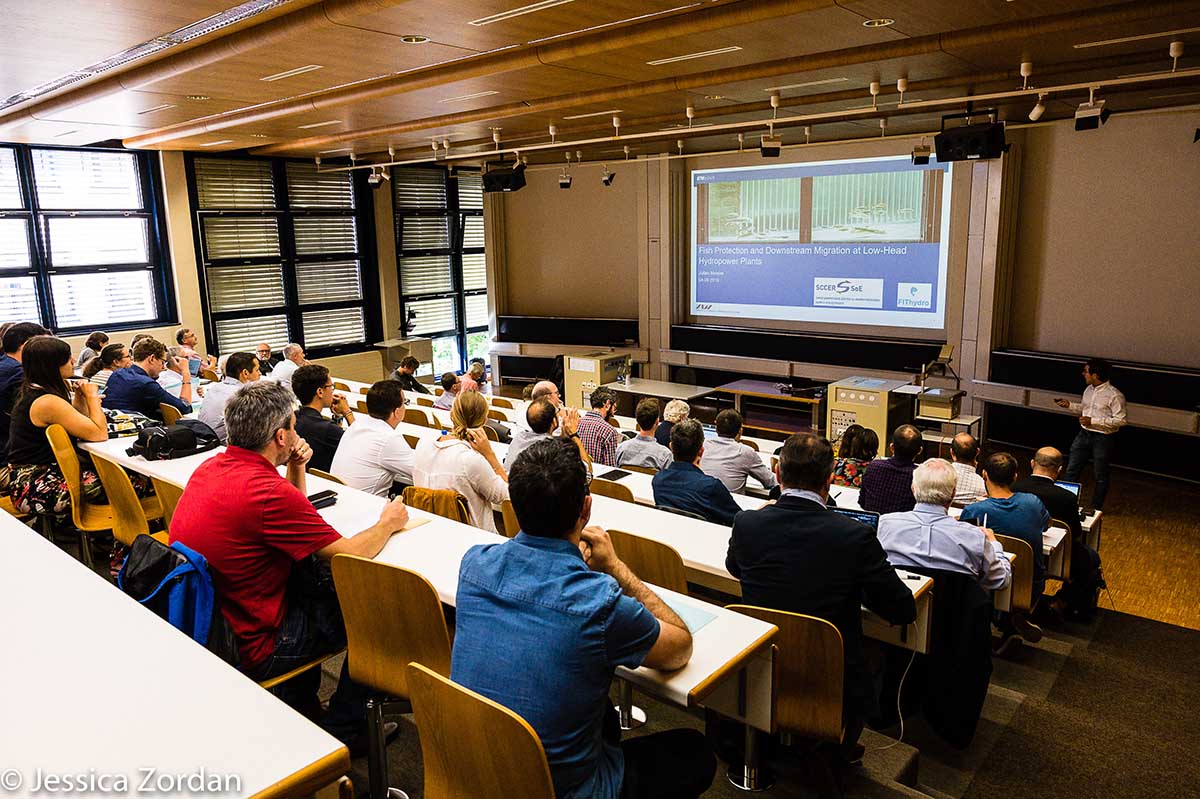
The final SCCER-SoE Annual Conference will take place on 2 November 2020. It is very likely that it will take place entirely online. More details will be provided shortly. August 2020
Registration and abstract submission for EGW 2020 open
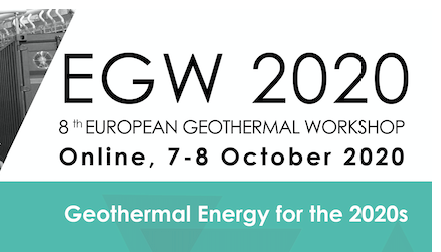
Registration and abstract submission for the 8th European Geothermal Workshop is now open. Learn more about this event here and submit your abstract here. EGW 2020 will take place online. June 2020
Abstract submission is open for Swiss Geoscience Meeting
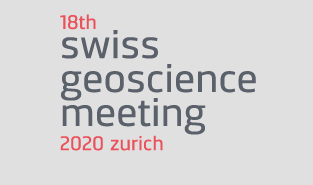
The abstract submission for the 18th Swiss Geoscience Meeting (6 and 7 November 2020) is now open. Learn more about the meeting here and submit your abstract here. June 2020
Annual Conference 2020: 7 & 8 September 2020 (to be confirmed)

Normally we send out the invitation for the annual conference at this time. This year it is unfortunately a little different due to the Corona crisis. We are currently planning to hold the Annual Conference in Geneva on 7 and 8 September 2020. Unfortunately, we cannot estimate whether the Annual Conference will actually take place then and in the usual form. We would be pleased if you could reserve the provisional date anyway. We will inform you as soon as we know more details and send the final invitation. May 2020
Synthesis Report on Climate change impact on Swiss hydropower production

A new synthesis report written within the SCCER-SoE framework evaluates the effects of ongoing climate change on water availability, geomorphic processes and their impact on hydropower production. You can read and download the report here. January 2020
Annual Conference and Science Report 2019
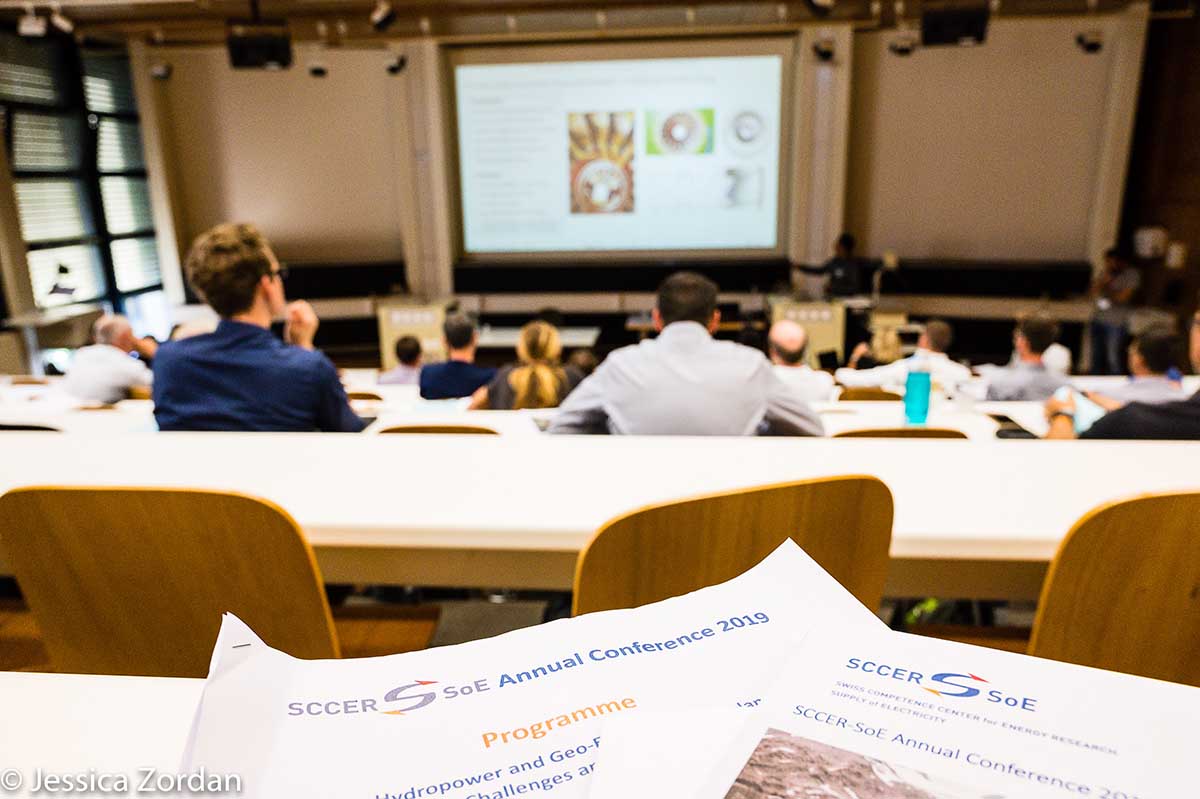
The SCCER-SoE Annual Conference 2019 at EPFL in Lausanne was a great success. All talks are now ready for download and you can take a look at some pictures taken during the two days. The 117 posters are compiled in the Science Report 2019. September 2019
Updated Programme for the SCCER-SoE Annual Conference 2019: 3 & 4 September 2019
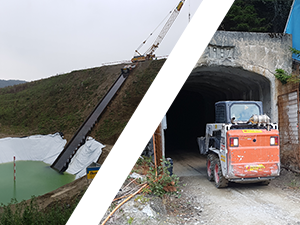
The programme for the SCCER-SoE Annual Conference 2019 was updated. It includes now the talks of sessions 4a and 4b and the rooms of the whole conference. You can find the programme here or on the website. July 2019
Inauguration of the Bedretto Lab

On 18 May 2019, the Bedretto Laboratory for Geo-energies was officially inaugurated. Around 300 people from the public but also from politics, science and industry, attended the celebration and visited the lab. One day before, on 17 May 2019, a media event took place. It attracted 17 journalists from all over Switzerland and resulted in around 13 well-balanced and informative media reports about the lab, the projects and the importance of geo-energy.
To see more pictures of the inauguration and to receive updates, follow the Bedretto Lab on Instagram! May 2019
Join the Inauguration of the Bedretto Underground Laboratory for Geoenergies on 18 May 2019!
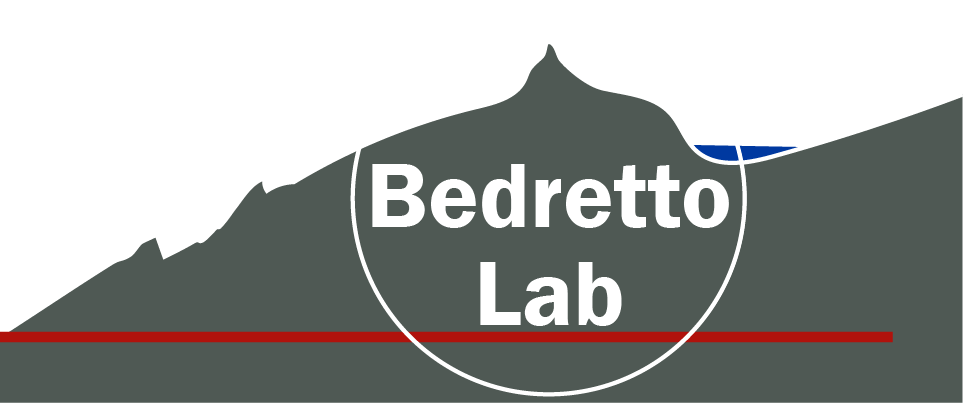
We will officially inaugurate the Bedretto Underground Laboratory for Geoenergies on 18 May 2019 and invite the interested public to join us in celebrating. Use this exclusive opportunity to visit the Bedretto Lab! You will be able to explore the history of the Alps deep inside the mountain, to learn more about the planned projects and the measuring systems, to solve a rock quiz, and to follow the production of drill cores. For further information and the registration for the free lab visits please refer to Bedretto Lab Inauguration. April 2019
Save the date for the SCCER-SoE Annual Conference: 3 & 4 September 2019

The SCCER-SoE Annual Conference 2019 presents insights into our research highlights, puts a strong emphasis on knowledge and technology transfer and the project posters, and offers many opportunities for personal exchange. Please find more information and the preliminary programme in the conference announcement and on the website. Registration is required and will be open in May 2019. April 2019
Inauguration Bedretto Laboratory for Geoenergies

On 18 May 2019, we will officially inaugurate the Bedretto Underground Laboratory for Geoenergies. For this occasion, we invite the interested public in the afternoon to visit the rock laboratory situated in the middle of the 5.2 kilometer long tunnel connecting the Ticino with the Furka railway tunnel. Detailed information about the event will follow in April. February 2019
Register now for the SCCER School #2!

The registration for the SCCER School #2 (11 to 14 June 2019, Flüeli-Ranft) is now open. For detailed information including the programme consider this PDF or visit the website. January 2019
The SCCER School #2 is cancelled. Unfortunately, too few people have registered, which is why we are unable to run the School. April 2019
Media visit to the ELEGANCY experiment

After having introduced ELEGANCY in an SCCER-SoE blog article in August 2018, the experiment is about to start. On this occasion, numerous journalists gathered on 17 January 2019 at the Mont Terri laboratory and learned how faulted rock can retain CO2. Read more about the project here and in the blog article (available in English, German, and French). January 2019
Celebration of Saint Barbara on 4 December at Bedretto Underground Laboratory for Geoenergies
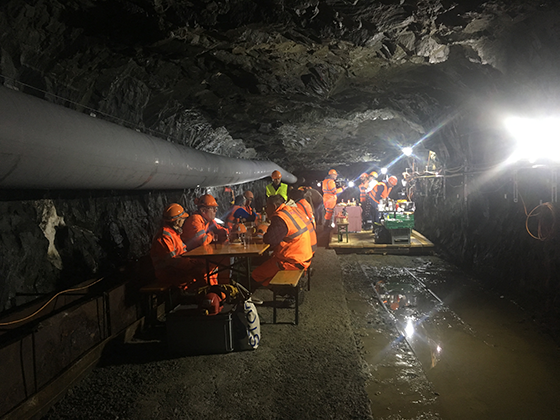
On 4 December, the project team celebrated the commemoration day of Saint Barbara in the Bedretto tunnel. Saint Barbara is the patron of miners and geologists. As tradition demands, work was interrupted on that day and a statue of Saint Barbara was consecrated and installed in a niche. This was followed by a small celebration in her honour. You will find more pictures in the newsletter (issue 3/2018). December 2018
Watching the big splash: media visit of the impulse wave experiment
Due to glacier retreat, more alpine valleys become available for hydropower (dam lakes). These lakes are at a higher risk of being hit by rockfall or avalanches, and the resulting waves may damage or even overflow the dam walls. An impulse wave experiment (which is part of FLEXSTOR) aims at learning more about these waves by sliding a heavy sledge into a water basin. This experiment takes place in a gravel pit in Bülach (ZH). On 1 October, journalists gathered there and attended a demonstration of the project. Watch this video and gain an impression of what the experiment looked like. October 2018
Annual Conference and Science Report 2018
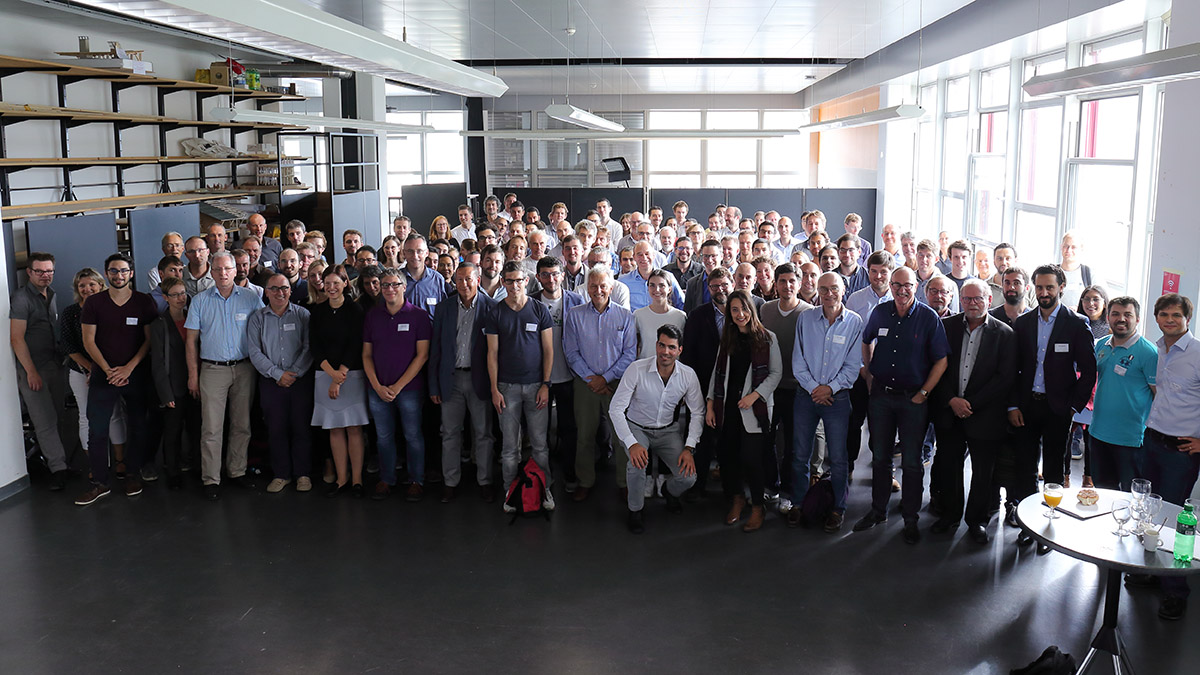
The SCCER-SoE Annual Conference 2018 at the Lucerne University of Applied Sciences and Arts in Horw (LU) was a great success. All talks are now ready for download and you can take a look at some pictures taken during the two days. The 135 posters are compiled in the Science Report 2018. September 2018
Public event for the Bedretto project

On September 18th 2018, a public event informing about the Bedretto Underground Laboratory for Geo-energies BULG and its projects took place at Cioss Prato. The Bedretto project addresses questions associated with the validation of stimulation procedures and the sustainable utilization of heat exchangers in the deep underground. It is a follow-up of the Grimsel "In-situ Stimulation and Circulation (ISC)" project, which successfully carried out pressure fluid injection experiments in crystalline rock mass. The projects leaders met with the inhabitants of the Bedretto valley and presented their research objectives, timeline, risks and benefits of the underground laboratory. Learn more about the project. September 2018
Glacier retreat has limited impact on Swiss hydropower production

A recently published paper written by Bettina Schaefli, Pedro Manso, Mauro Fischer, Matthias Huss and Daniel Farinotti quantifies the effect of glacier retreat due to global warming on hydropower production. This detailed analysis of all Swiss water resources shows that only a small percentage is provided by glacier meltwater. Consequently, the reduction of these waters predicted for the end of the 21st century poses no threat to Swiss hydropower production. Read more: paper, SNF press release. September 2018
Programme for the SCCER-SoE Annual Conference: 13 & 14 September 2018

The registration for the SCCER-SoE Annual Conference 2018 is closed and the programme was updated. For formatting instructions for the posters please consider this PDF or visit the website.
If you missed the deadline for registration, please contact us. September 2018
Register now for the SCCER-SoE Annual Conference: 13 & 14 September 2018

Anthropogenic or not? Investigating the magnitude 5.5 Pohang earthquake in South Korea

A recently published paper in Science, written by a team of the Swiss Seismological Service at ETH Zurich and collaborators from the Engineering Geology group at ETH, GFZ Potsdam and the Glasgow University, explores the potential link between a magnitude 5.5 earthquake in South Korea and a nearby geothermal project. The earthquake, which occurred on 15 November 2017, injured about 80 people and caused damage to numerous buildings in the city of Pohang. If proven to be anthropogenic, it would be the largest earthquake known to have been associated with the exploitation of deep geothermal energy. Read more. April 2018
Save the date for the SCCER-SoE Annual Conference: 13 & 14 September 2018

The fifth SCCER-SoE Annual Conference takes place on 13 & 14 September 2018 in Horw (LU), at the Lucerne University of Applied Sciences and Arts. The Annual Conference presents insights into our research highlights, puts a strong emphasis on the project posters, and offers many opportunities for personal exchange. At this year’s conference we introduce parallel sessions and two new formats: poster pitches as well as knowledge and technology transfer talks for hydropower and geo-energy stakeholders. Please find more information and the preliminary program on our website. Registration is required and will be open from May 2018. April 2018
Mitigate the risk of induced seismicity
Two recently published papers describe an innovative system and its underlying statistical framework to mitigate the risk of induced seismicity caused by deep geothermal projects (Mignan et al. and Broccardo et al.). Specifically, the newly developed adaptive traffic light system (ATLS) constantly evaluates seismic and hydraulic data during fluid injection and alerts when a previously determined safety norm is to be crossed (e.g. a threshold probability of damages or fatalities). The TLS is adaptive in the sense that it is data-driven and bases on statistical modeling, not on expert judgement as commonly implemented. In the future, the team of the SCCER-SoE task 4.1 plans to improve the statistical model and to reduce uncertainties by better identifying the underlying physics. Various datasets, like the one collected from the Grimsel ISC experiment (Demo-1), will serve this purpose. January 2018
Our research is bearing fruit
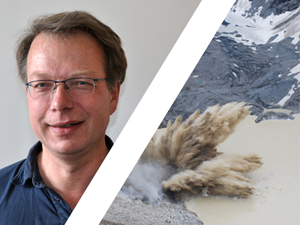
The latest SCCER-SoE newsletter (in German and French) introduces you to the engineer Joseph Moerschell, who is developing a new borehole seismometer that will be extensively tested in the Valais next year. In addition, it reveals the plans of a thrilling field test and links you to recent media reports on research findings with the involvement of the SCCER-SoE. December 2017
SCCER School "Shaping the Energy Transition"
At the SCCER School in Engelberg in mid-October, the first of its kind, 160 PhD students, postdocs and scientific assistants spent three days thinking and discussing about how to shape the energy transition with their research. Nearly 40 speakers from academia, industry and federal offices covering topics as the energy market, storage, supply, consumption and distribution inspired and challenged the young scientists. Excursions to a multifunctional wastewater treatment plant, the small hydropower plant Trübsee and the Benedictine Monastery of Engelberg enriched the dense program and allowed soaking up the warm autumn sun and panoramic mountain view. Take a look at some pictures and download the presentations. October 2017
Annual Conference & Science Report 2017
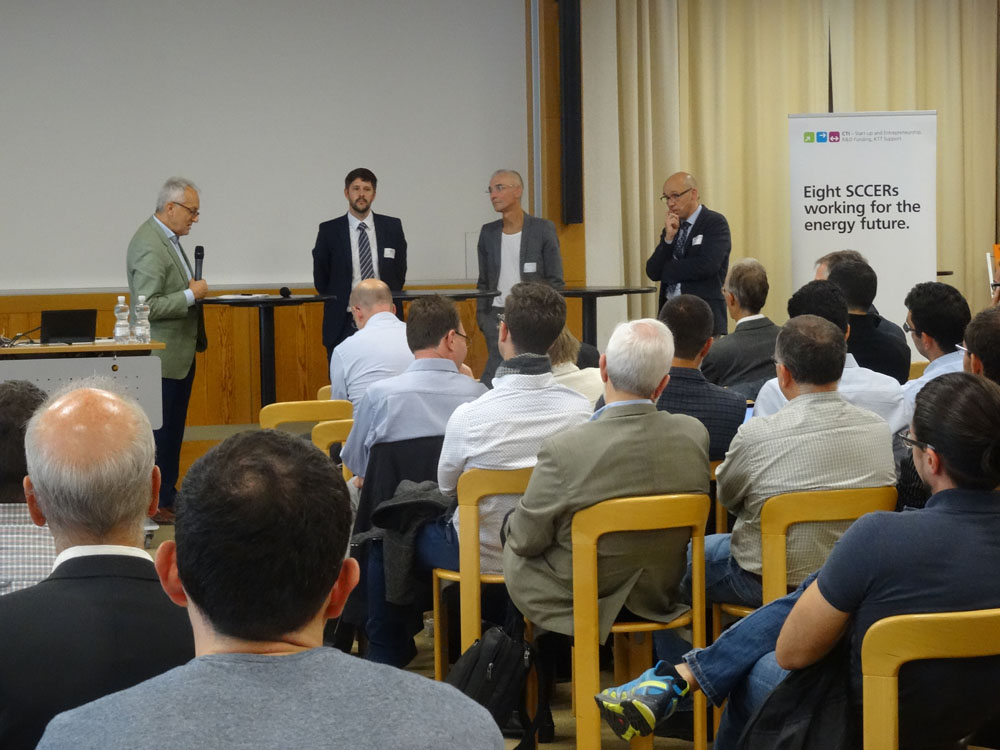
The SCCER-SoE Annual Conference 2017 at the WSL in Birmensdorf was a great success. All talks are now ready for download and you can take a look at some pictures taken during the two days. The 140 project posters presented and discussed are compiled in the Science Report 2017. September 2017
Your preferred Swiss electricity portfolio 2035

Support the Swiss National Science Foundation project RIGOROuS and participate in the survey on your preferred Swiss electricity portfolio for the year 2035 (5-10 min, available in English, German and French). The survey is based on the interactive web-tool Riskmeter, where you can explore a variety of Swiss electricity portfolios as well as read about pros and cons of the different technologies. After you submit your preferred portfolio in Riskmeter, you will be asked several questions on your familiarity with the energy topic as well as your experience with Riskmeter. September 2017
German TV documentary on dam safety
The crew of the ZDF broadcast "planet e." visited, amongst other places, the Grande Dixence dam in the Valais with Georges Darbre from the SFOE and the Laboratory of Hydraulic Constructions at the EPFL with José Pedro Matos and Anton Schleiss. The documentary focuses on the safety of dams, especially under future conditions of glacier and permafrost melting possibly causing rock fall and dam break. Click here to watch the documentary in full length or to pick out the above mentioned excerpts starting at minutes 01:30, 13:40, 31:20 and 41:56. August 2017
Weather-sensitive hydropower
Did you know that the reservoirs in Switzerland produced 13.7 percent less electricity in 2016 than in the previous year? Read our new blog post by Manfred Stähli from the Swiss Federal Research Institute WSL to learn more about these weather-dependent fluctuations in hydropower production. The post is available in English, German, and French. Feel free to share it on Facebook, Twitter & Co. and to recommend our blog to interested people. June 2017
Joint Activity kicked off
On 29 and 30 May 2017, modelling teams from all eight SCCERs convened at Kloster Kappel to officially start the Joint Activity Scenarios & Modelling (JA-S&M). The objective of JA-S&M is to generate robust scenarios for the realization of the Energy Strategy 2050. It will give answers to a number of relevant questions: Which will be the key technical elements of the energy system in 2050? How can the development be guided by policy measures? What is the impact on the Swiss economy as a whole, and on the Swiss citizens? Two work streams have been started, namely (1) a harmonization and efficient exchange of scenario input data (e.g. costs, time series of production and consumption), and (2) the definition of a first set of scenarios to be used by the various modelling teams. The mid-term target is to have first results by spring 2018, and to share and discuss these at a national scenario benchmarking workshop. May 2017
Curtain up for our phase 1 highlights
Do you wonder what the SCCER-SoE achieved in its first phase lasting from 2013 to 2016? Then have a look at our collection of research highlights. It offers insights into burning questions, promising opportunities, key challenges, and potential solutions in the domains of geo-energy and hydropower. April 2017
Swiss wish for a renewable energy future
Within the NRP 71 „Managing Energy Consumption“, a survey with nearly 8’300 participants conducted by the Institute of Political Science (University of Bern) shows that the Swiss population strongly supports the installation of additional renewable electricity plants in the future. In detail, nearly 80% advocate the construction of new large-scale hydropower plants, and almost 60% are in favor for using geothermal energy and small-scale hydropower. In Western Switzerland, the acceptance for geothermal power plants is higher compared to other parts of the country. Least desired are electricity imports and the construction of new nuclear and gas power plants. Find out more about the project and its results. April 2017
Newsletter "Putting knowledge into practice"
The fifth issue of our newsletter (in German and French) starts off by introducing the second phase of the SCCER-SoE, which started in January 2017. It continues by providing various insights into our pilot and demonstration projects about sediments in reservoirs, geothermal energy in Geneva, small hydropower, and the ISC experiment in the Grimsel rock lab. April 2017
#6 SCCER-SoE Blog
In our new blog post, the SCCER-SoE's program manager Ueli Wieland explains how geothermal probes used for heating can not only extract but also store energy for future use. Additionally, he provides examples of implemented and planned systems in Switzerland and Europe. The post is available in English, German, and French. Feel free to share it on Facebook, Twitter & Co. and recommend our blog to interested people. December 2016
New issue of the SCCER-SoE newsletter
The leading motto of the fourth SCCER-SoE newsletter is "towards the future". It's available in German and French and tells you more about several hydropower and geo-energy projects of great importance for the future. In addition, it's worth reading until the end, where the SCCER-SoE reveals the focus areas of its second phase during the next four years. November 2016
Paper on risk governance for induced seismicity of geothermal projects
Evelina Trutnevyte and Stefan Wiemer of the SCCER-SoE task 4.1 just released a new paper in which they propose the screening tool GRID for geothermal project operators and regulators to get a sense of the extent to which induced seismicity is a concern for a specific project. Furthermore, they recommend tailor-made risk governance measures, including for example hazard and risk assessment, seismic monitoring, insurance, traffic light systems, and public and stakeholder engagement. November 2016
#5 SCCER-SoE Blog
Our new blog post addresses the problems that hydropower has to face due to sediments and identifies promising countermeasures. The author, Professor Robert Boes, is Director of the Laboratory of Hydraulics, Hydrology and Glaciology (VAW) at ETH Zurich and Principal Investigator at the SCCER-SoE. The post is available in English, German, and French. Feel free to share it on Facebook, Twitter & Co. and recommend our blog to interested people. November 2016
#4 SCCER-SoE Blog
In our fourth blog post you get to know DESTRESS – a recently started EU project that aims to pave the way for economically successful, sustainable, and environmentally responsible geothermal energy plants. Professor Stefan Wiemer and Michèle Marti, the authors and both involved in the SCCER-SoE and DESTRESS, discuss frequent pitfalls of geothermal projects and how demonstration sites and collaborative research can help to overcome them. The post is available in English, German, and French. Feel free to share it on Facebook, Twitter & Co. and recommend our blog to interested people. October 2016
Project posters and presentations ready for download
Did you miss our Annual Conference 2016 or want to catch up on a specific project? Click here to download a presentation held during the two days or here to download the latest project posters ordered by tasks. October 2016
The ISC experiment in the spotlight

In September 2016, the SCCER-SoE invited journalists for a visit to the Grimsel rock laboratory to explore the experiment „In-Situ Stimulation and Circulation (ISC)“ led by Dr. Joseph Doetsch. Learn more about the journalists‘ impressions and the project in the following TV reports and newspaper articles:
- SRF Tagesschau: Neues Forschungs-Projekt soll Geothermie salonfähig machen
- RTS 19h30: Une nouvelle étape est en cours pour développer la géothermie
- 3sat nano: Erdwärme ohne Beben (starting at 08:00 in the broadcast)
- ETH Globe Magazine: The rock crackers / Die Felsenknacker
- ETH YouTube: ETH-Wissenschaftler unter Tage
- Aargauer Zeitung: Hydraulische Stimulationsexperimente mitten im Berg
- La Liberté: Géothermie sans heurts
- Blick: Erdbeben-Simulation im Felslabor - Dieser Forscher schlägt Wellen
- Le Temps: La géothermie, mais sans les secousses
- Radio SRF 2 Kultur: Geothermie ohne dass die Erde bebt
- NZZ: Geothermie-Forschung - Erschütternde Erkenntnisse
- Radio RTS la 1ère CQFD: Des solutions pour la géothermie profonde
